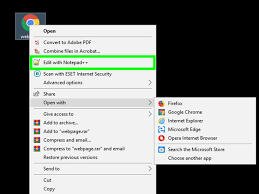A webpage is the cornerstone of your online presence, serving as a digital gateway to showcase your brand, products, or services to the world. In the vast landscape of the internet, a well-crafted webpage can be the difference between engaging visitors and losing them to competitors.
When it comes to designing a webpage, HTML (Hypertext Markup Language) plays a crucial role in structuring content and presenting it in a visually appealing manner. HTML tags are like building blocks that define the elements of a webpage, from headings and paragraphs to images and links.
The tag serves as the root element of every webpage, encapsulating all other elements within it. Within the tag, you’ll find the
and tags. The section contains meta-information about the webpage, such as its title and links to external resources like stylesheets and scripts. On the other hand, the section houses the visible content that users interact with.To create headings on your webpage, you can use
to
tags for different levels of importance. Paragraphs are defined using the
tag, allowing you to structure your textual content for readability. Images can be included with the tag, specifying attributes like source (src) and alternative text (alt) for accessibility.
Links are an essential part of webpages for navigation and connecting different pages together. The tag is used to create hyperlinks, with attributes like href defining the destination URL and target specifying how it should open (e.g., in a new tab).
In addition to these basic elements, HTML offers a wide range of tags for styling content with CSS (Cascading Style Sheets), embedding multimedia with video or audio tags, creating forms for user input using input fields like text boxes or buttons – all contributing to an interactive and engaging user experience.
Ultimately, a well-structured webpage not only enhances user engagement but also improves search engine visibility through proper HTML markup. By understanding how HTML tags work together to create a cohesive digital experience, you can elevate your online presence and make a lasting impression on visitors to your site.
9 Essential Tips for Crafting an Effective and User-Friendly Webpage
- Use a clean and simple design to improve readability.
- Ensure fast loading times by optimizing images and code.
- Make sure your webpage is mobile-friendly for a better user experience.
- Include relevant keywords for SEO purposes.
- Create clear navigation menus to help users find information easily.
- Use high-quality and engaging visuals to attract visitors’ attention.
- Regularly update content to keep the webpage fresh and current.
- Include social media sharing buttons to encourage user engagement.
- Test your webpage on different browsers and devices to ensure compatibility.
Use a clean and simple design to improve readability.
Utilising a clean and simple design on your webpage can significantly enhance readability for users. By minimising clutter and distractions, a streamlined layout allows content to stand out and be easily digestible. Clear typography, ample white space, and intuitive navigation contribute to a more pleasant browsing experience, keeping visitors engaged and focused on the information presented. A visually uncluttered design not only improves readability but also conveys professionalism and sophistication, leaving a lasting positive impression on users.
Ensure fast loading times by optimizing images and code.
To enhance user experience and boost search engine rankings, it is vital to ensure fast loading times for your webpage. One effective way to achieve this is by optimizing images and code. By compressing images without compromising quality and minifying code to reduce file sizes, you can significantly improve loading speeds. This optimization not only enhances user satisfaction by providing a seamless browsing experience but also signals search engines that your site is well-structured and user-friendly, potentially leading to higher visibility in search results.
Make sure your webpage is mobile-friendly for a better user experience.
Ensuring that your webpage is mobile-friendly is crucial for providing a seamless and enjoyable user experience. With the increasing number of users accessing websites on their smartphones and tablets, it’s essential to optimise your webpage layout and design to be responsive across different devices. A mobile-friendly webpage not only enhances usability but also boosts engagement and encourages visitors to stay longer on your site. By prioritising mobile responsiveness, you can cater to a wider audience and improve overall user satisfaction, ultimately leading to increased traffic and conversions.
Include relevant keywords for SEO purposes.
Including relevant keywords on your webpage is essential for SEO purposes. By strategically incorporating keywords that align with your content and target audience’s search queries, you can improve your website’s visibility in search engine results. These keywords help search engines understand the relevance of your webpage to specific topics, making it more likely to be displayed to users seeking related information. By conducting thorough keyword research and integrating them naturally into your content, you can enhance your SEO efforts and attract organic traffic to your site.
Create clear navigation menus to help users find information easily.
Creating clear navigation menus is essential for enhancing the user experience on your webpage. By organising your site’s content into easily accessible menus, you can help users navigate through different sections effortlessly and find the information they need quickly. Clear and intuitive navigation not only improves usability but also keeps visitors engaged and encourages them to explore further. Whether it’s a dropdown menu, a sticky navigation bar, or a simple list of links, prioritising user-friendly navigation can make a significant difference in how users interact with your website.
Use high-quality and engaging visuals to attract visitors’ attention.
In the realm of webpage design, incorporating high-quality and engaging visuals is a powerful strategy to captivate visitors’ attention and enhance their overall browsing experience. Compelling images, videos, infographics, and other visual elements not only make the content more visually appealing but also help convey information more effectively. By utilising visually striking graphics that resonate with your target audience, you can create a memorable and engaging online presence that encourages visitors to stay longer on your site and explore what you have to offer.
Regularly update content to keep the webpage fresh and current.
Regularly updating content on your webpage is essential to maintaining its freshness and relevance. By consistently adding new information, articles, or updates, you not only keep visitors engaged but also signal to search engines that your site is active and up-to-date. Fresh content can attract repeat visitors and encourage them to explore more of what your webpage has to offer. Additionally, updating content regularly can help improve your search engine rankings by showing that your site is a valuable source of timely and accurate information. Keeping your webpage current demonstrates your commitment to providing users with the latest insights and updates in your industry, ultimately enhancing the overall user experience.
Include social media sharing buttons to encourage user engagement.
Including social media sharing buttons on your webpage is a simple yet effective way to boost user engagement. By providing visitors with easy access to share your content across various social platforms, you can encourage them to interact with your brand and spread the word to their own networks. This not only increases the visibility of your content but also fosters a sense of community and connection with your audience. Embracing social media sharing buttons can enhance the reach and impact of your webpage, ultimately driving more traffic and fostering meaningful interactions with users.
Test your webpage on different browsers and devices to ensure compatibility.
Testing your webpage on various browsers and devices is crucial to ensure optimal compatibility and user experience. Different browsers interpret HTML and CSS code differently, which can lead to discrepancies in how your webpage is displayed. By testing on popular browsers like Chrome, Firefox, Safari, and Edge, as well as across different devices such as desktops, laptops, tablets, and smartphones, you can identify any issues early on and make necessary adjustments to guarantee a seamless browsing experience for all visitors. Prioritising cross-browser and cross-device testing helps you reach a wider audience and maintain consistency in how your content is presented across different platforms.




